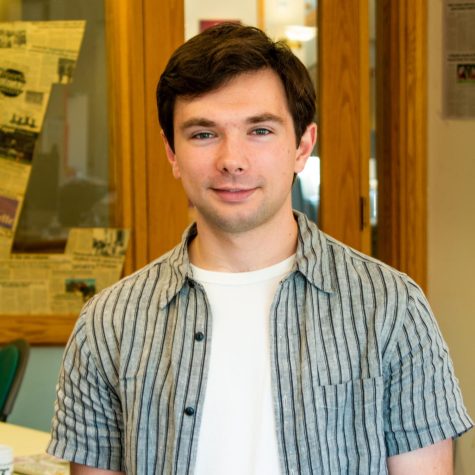The college’s ambitious plan to grow the student body population by 400 students is facing obstacles, including a drop in enrollment caused by the pandemic and the imminent exit of President Alison Byerly, one of the plan’s chief proponents. First adopted by the Board of Trustees in 2016, the “Affordability and Distinction through Growth” initiative aimed to increase the student body to generate additional revenue for financial aid. But now, like so many other projects, its future is uncertain.
Byerly wrote in an email that she believes the college remains committed to the overarching goals of the plan, but “whether the specific mechanism and pace of the original plan will prove the best path forward following the pandemic remains to be seen.”
According to the chair of the Enrollment Planning Committee and Professor of History, Joshua Sanborn, Byerly’s plan to step down on June 30 means that the college will likely wait before taking further action on the strategic direction.
“I think it’s fair to say that [the initiative] is at a pause right now. Given the fact that we have a new president coming in–and presidents are generally responsible for the strategic vision, direction, and implementation at an institution like this–they’re going to wait before any decisions are being made about whether Lafayette is going to continue that growth initiative going forward,” Sanborn said.
The effects of the pandemic hit enrollment, a key part of the initiative, particularly hard, Sanborn explained. Expecting about 725 students on campus this fall, only around 600 arrived this past academic year with many deferring their enrollment to either spring ’21 or next fall.
Considering that the budget and operations of the College are dependent on enrollment, a key goal is “returning to pre-pandemic enrollment levels as quickly as possible,” Byerly wrote.
To compensate for this shortfall, Greg MacDonald, vice president of enrollment management, noted that the college plans to increase the number of incoming freshmen next year.
Some faculty, however, said they feel they were left out of this decision-making process and fear that this increase in first-year students will create a lopsided student body population in which professors must offer more intro-level courses at the expense of seminars for upperclassmen.
Byerly said the College can address these challenges.
“We have occasionally enrolled unexpectedly large entering classes in the past, and we have always been able to make the necessary adjustments to accommodate them,” Byerly wrote. “By planning for the possibility of a larger entering class now, we have given ourselves more time to prepare, and the academic administration will work closely with faculty colleagues to determine where we may need to adjust courses, hire a visiting faculty member, or make other changes.”
The decline in enrollment likewise presented challenges for financial aid. The strategic direction aims at implementing need blindness in the admissions process by 2027. While the College has been on track, the pandemic likely “delayed the timetable a bit,” Assistant Vice President for Financial Aid, Forrest M. Stuart, wrote in an email.
“Any change in enrollment, up or down, will have a direct effect on the financial aid outlay,” he wrote. “This would be true even without a pandemic. What made this past year difficult is not so much that enrollment dropped, but the rate of that drop in one year.”
The dip in enrollment resulting from the pandemic has not been entirely unwelcome news, however. The college has passed the goal outlined in the strategic direction of maintaining a ten to one student to faculty ratio and is expected to do so in the next academic year, Provost John Meier, head of the Academic Planning Committee, wrote in an email. Meier likewise noted that despite the closing of several searches because of the pandemic, many are resuming.
One of the ancillary goals of the growth initiative is to grow the faculty and staff roughly commensurately to the student body, which the college has already started doing.
The goals regarding the physical expansion of the college are less clear. The $75 million Rockwell Integrated Science Center opened its doors in Fall 2019, and the following year the college successfully completed phase one of its expansion plans by opening the McCartney Dorms. Other projects, however, remain in limbo.
Despite receiving preliminary approval from the Easton city council, the construction of the proposed four-story, 169-bed residence hall with a new health and wellness center for the College’s second phase of expansion has not yet begun. The renovations planned for Kunkle Hall likewise are incomplete, Sanborn noted.
Despite the uncertainty, Byerly said is proud of the progress that has been made so far.
“The affordability and distinction through growth plan has been very successful in the years since 2016 in allowing us to offer more need-based financial aid and thus draw a stronger and more diverse student body,” she wrote.























































































































